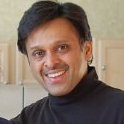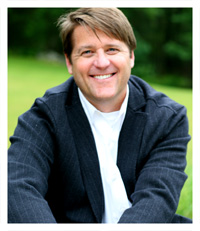Following the year of “content marketing” that was 2013, we can only hope that 2014 is destined to be as rewarding a year for consumers on social media. Many brands are figuring out that earning customer loyalty via great content is on par with nurturing a real, face-to-face relationship, in that being a supportive, useful and interesting friend will almost always earn you an invite to the birthday party.
Some, like Torani, are well ahead of this curve. For a product like Torani, which relies on retailers to establish the first relationship with customers, it pays to keep tabs on the rolodex by not just touching base over social media, but also adding to their daily lives in a fun, relevant way. CMO Julie Garlikov, who won a President’s Circle Award at the recent CMO Club Awards, explains the ways Torani grows and manages its loyal fan base on a modest budget.
Drew: A CMO has a lot of choices in terms of where they invest their time. What have been your top priorities in the last 12 months?
Our business continues to grow like crazy. I am most focused on growing our consumer business and improving household penetration. This includes some significant product innovation, as well as educating and engaging our consumer in new ways.
Drew: Have there been any big surprises in terms of what’s worked really well and what hasn’t?
We’ve launched a lot of new products this year. What’s surprising is how long it has taken to get some of them off the ground, especially when you’re educating a market on a new behavior. The other big surprise to me this year is the explosive growth in mobile, which now accounts for almost 30% of our online traffic. We’re rapidly adapting our ecommerce platform to be better optimized for mobile.
Drew: Has the fact that Torani does not have a huge multi-million budget forced you to be more innovative?
We have to find the right partners to work with us who believe in our brand and who want to work with a great, local, family-owned business. And, we need to focus more on things like PR and creating social buzz to get the word out. We can’t do a lot of mass tactics, so we look to build really high loyalty with our business and consumer users, turning them into uber fans.
Drew: Have you been able to link your innovative marketing activities to the kinds of business metrics favored by CEOs?
I use a lot of test/invest methodology, trying things out small scale, proving that they deliver and then expanding. It’s the only way to make ensure the best ROI on limited budgets.
Drew: Marketing seems to be getting increasingly complex in terms of ways to spend and ways to monitor. Has it gotten more complex for you and if so, how are you dealing with that complexity?
Julie: For such simple products, we have a very complex business with many channels and differing needs. When you add all the new ways to market, it is complicated, and that’s what makes it interesting. We’ve really focused the team on specific channels and segments and that helps them market the most successfully.
Drew: How do you stay close to your end users when the relationship with these folks is mainly owned by your retailer partners?
Julie: We get a great sense from social media and listening of what’s important to our user. We’ve also been doing a lot of event marketing and mobile tours the past two years so we can hear more directly what our users like. Between our retail partners and our foodservice distributors, we can be one step removed. So, we have to create opportunities to engage regularly and we do a lot of research like ethnographies to really understand what our consumer wants and needs.
Drew: Has social media played much of a role in the driving your brand? If so, how has it helped or how do you see it helping in the future?
Julie: We have a very active, loyal fan base that we engage with daily on Facebook, Pinterest, Twitter, etc. We also have done a lot of blogger outreach and engage with various bloggers on a regular basis, sending them new products, etc. This helps get the word out on a small brand and is a big part of our acquistion strategies.
Drew: Content marketing is hot topic at the moment. Are you increasing your investment in this area?
Julie: Yes, this is a huge area for us. We’ve developed videos and will be producing even more as the year wraps up. Everything from how-to videos to funny content. We also continue to create enticing inspirational photos and editorial, almost like what you see in a food magazine. We’ve found that inspiring people with seasonal recipes and super on-trend ideas generates significant sales lift, so content is key for us.
Drew: Do you agree with that notion that marketing is everything and everything is marketing and if so how have you extended the boundaries of your job beyond the normal purview of the CMO?
Julie: This is so true. We’ve actually created a social media/buzz marketer position within our department and moved consumer service into marketing. That way, if someone engages on Facebook or Twitter or the old school phone, we’re able to have one seamless approach to dealing with their experience. And, we’ve got a team who does the same thing for our commercial user too.



